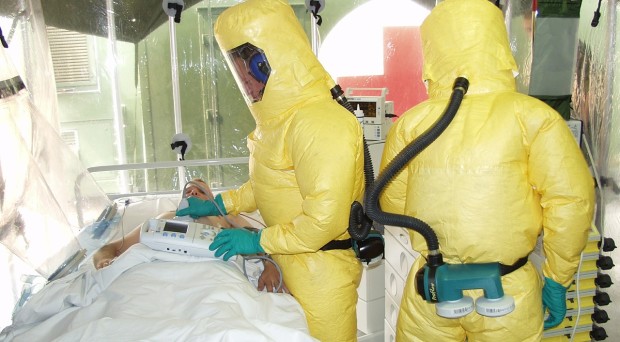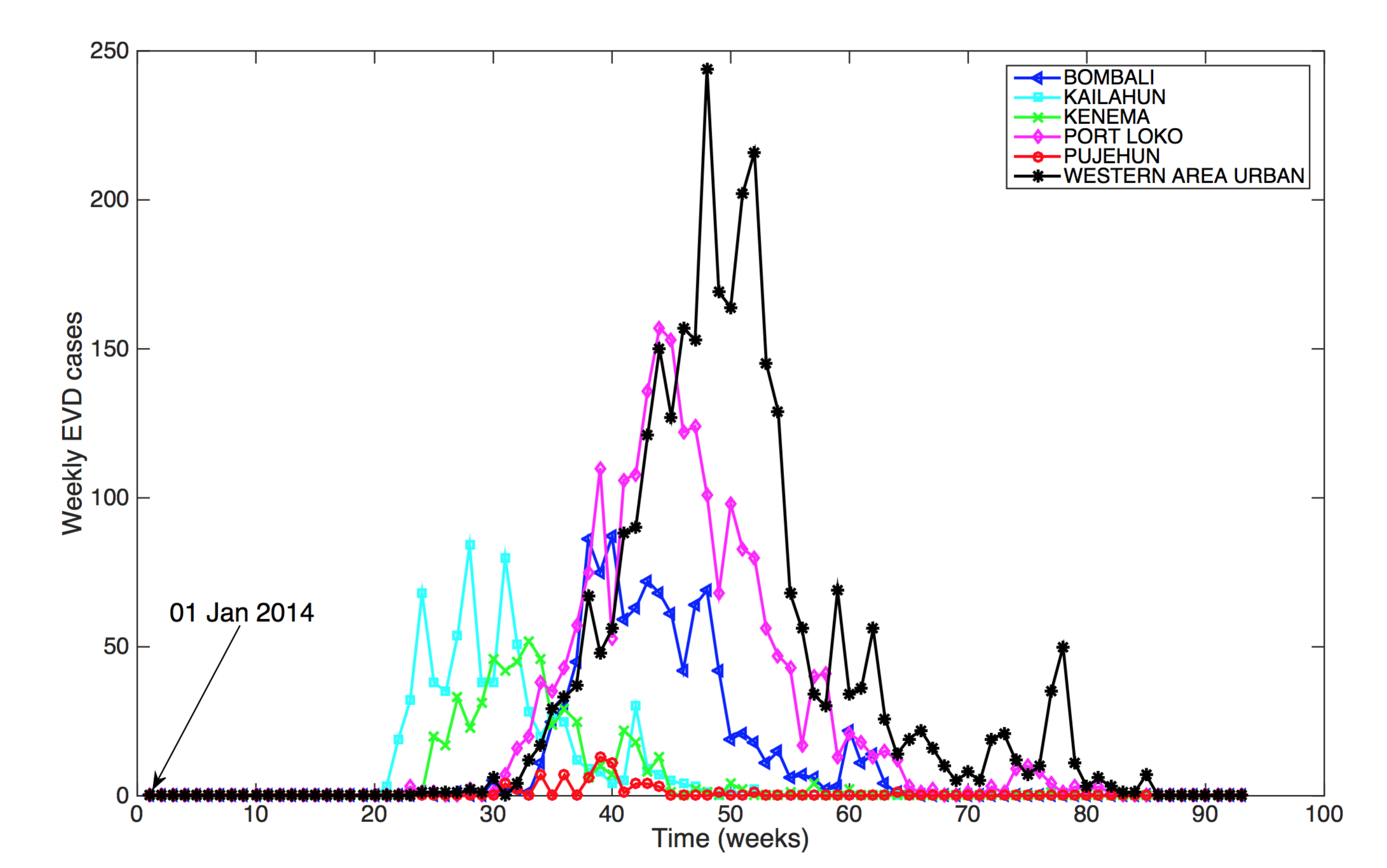
The unprecedented 2013-15 epidemic of Ebola virus disease (EVD) in West Africa involving the countries of Guinea, Liberia and Sierra Leone has been traced back to a single cross-species transmission event from a fruit bat in the forested region of the district of Guéckédou in Guinea in December 2013.
Chains of Ebola transmission were not reported to the World Health Organization until late March 2014 when the virus had already reached neighboring Sierra Leone and Liberia.
With a lack of pharmaceutical interventions against Ebola, basic public health interventions including effective isolation of infectious individuals in healthcare settings and contact tracing activities to rapidly identify symptomatic individuals have played a key role in controlling this epidemic in West Africa.
Although the epidemic is not yet over, substantial progress has been achieved in controlling the epidemic. As of December 9, 2015, a total of 28,601 cases and 11,300 deaths in the three most affected countries have been reported to the World Health Organization (WHO) with low Ebola incidence levels reported in West Africa since April 2015. Only ten cases have been reported in Guinea and Liberia during October-November, 2015.
While recent studies (such as here and here) have improved our understanding of the epidemiological and clinical characteristics of EVD, datasets on the spatial-temporal characteristics of the contact networks over which the virus spread remain limited.
Such data are important to improve mathematical transmission models to generate reliable epidemic forecasts, guide public health control strategies, and assess the effect of control interventions.
To contribute to our understanding of the transmission characteristics of EVD and the role of control interventions, Ajelli et al. in BMC Medicine provide a detailed analysis of the EVD outbreak in Pujehun, Sierra Leone during July-November 2014.

Specifically, the authors analyzed a consolidated dataset of hospital records and contact tracing data together with local population interviews to reconstruct detailed transmission chains of the outbreak.
The researchers also assessed the effects of various control interventions including case isolation, safe burials, and contact tracing using an agent-based transmission model. The same modeling framework has been successfully employed to characterize the transmission dynamics of the Ebola epidemic in Liberia.
Ajelli et al. found that the majority of the exposures stemmed from contact with family members living in the same household or extended family (74.3%), 17.9% of the transmission events occurred in the community, mostly from contact between friends, and only 7.7% of the transmission events were linked to healthcare settings (only two health care workers and one patient were affected).
Overall, the transmission patterns reported by Ajelli et al. reflect the impact of the rapid implementation of control interventions (effective isolation of symptomatic individuals and contact tracing activities) in Pujehun district and three months after the epidemic was reported to WHO.
By contrast, funeral exposure and hospital transmission likely drove Ebola transmission in West Africa during the early epidemic months until approximately July 2014, both of which rapidly declined after the implementation of control interventions.
Data from Guinea reported by Faye et al. covering 152 Ebola cases from three areas of Guinea between February and August 2014 indicated predominance of community exposure (72% through family), followed by 13% of hospital exposure, and 13% of funeral exposure.
This study also reported the proportion of health-care workers in the transmission tree at 14%. The hospitalization rate reported by Faye et al. (80%) was slightly lower to that reported by Ajelli et al. for the outbreak in Pujehun in Sierra Leone (89%). Another limited outbreak of EVD occurred in Nigeria during July-September 2014.
A common feature of the temporal evolution of the reproduction number across local Ebola outbreaks including that of Pujehun is its rapid decline after just a few generations of infections.
The initial reproduction number estimate of the Ebola outbreak in Pujehun, Sierra Leone estimated by Ajelli et al. using an individual-based transmission model displayed substantial uncertainty (R=2.2, 95 %CI: 1.5,4.5) and is broadly in agreement with published estimates of the reproduction number for EVD.
A common feature of the temporal evolution of the reproduction number across local Ebola outbreaks including that of Pujehun is its rapid decline after just a few generations of infections.
This could be explained either as the natural history of disease transmission in a highly clustered network combined with the effects of control measures/ interventions and the rapid onset of behavior changes in the population.
The modeling analyses carried out by Ajelli et al. further support the dramatic positive impact of combined public health interventions on rapidly mitigating the spread of EVD.
Comments